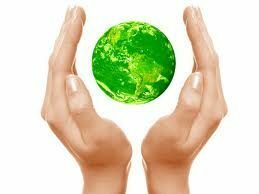Biogeochemical Cycles: Carbon, Nitrogen, Phosphorus
Biology / / July 04, 2021
Living beings need around 40 chemical elements for their development; Among them, the fundamental ones are: carbon, hydrogen, oxygen, nitrogen, sulfur and phosphorus. Their existence in nature is limited; therefore, they must be constantly recycled. This is how the so-called biogeochemical cycles arise, which allow the availability of these elements one and another. time, transforming and recirculating through the atmosphere, hydrosphere, lithosphere and biosphere, that is, the ecosphere.
Biogeochemical cycles can be of two types:
- Of gaseous nutrients. Whose source of contribution is the atmosphere: Eg carbon, oxygen and nitrogen.
- Solid nutrients. Provided by the earth's crust; for example: phosphorus and sulfur.
Water plays a fundamental role in biogeochemical cycles, since atmospheric nutrients reach the earth's surface with rain; solid nutrients come from minerals from rocks worn and dissolved by water, in addition, plants absorb mineral nutrients dissolved in this liquid.
Carbon cycle:
Carbon is found in the atmosphere as carbon dioxide gas. Plants take carbon dioxide directly from the environment where it lives and with it they manufacture carbohydrates and some lipids during photosynthesis. When feeding on plants, animals ingest the complex compounds made from carbon dioxide and water. Carbon dioxide returns to the atmosphere through the respiration of living beings, by bacterial disintegration or as a residue of combustion.
Cycle of nitrogen:
Represents a typical example of gaseous nutrients. It constitutes the predominant element of the atmosphere (79%). Nitrificant.es bacteria fix atmospheric nitrogen and convert it into nitrogen salts, nitrites or nitrates, which plants absorb from the soil through their roots.
With nitrogen, the plant makes proteins during photosynthesis, which are ingested directly by herbivores or indirectly by carnivores. When organisms die, their bodies are disintegrated by bacterial action, forming ammonia; other bacteria convert ammonia into nitrates, or release it in gaseous form by the action of denitrifying bacteria; in this way the nitrogen returns to the atmosphere.
Phosphorus Cycle:
Phosphorus is an essential element for living beings, since it is part of the structure of nucleic acids and energy-producing molecules (ATP).
It is an example of a solid nutrient that is part of the soil; It is found in the form of phosphates dissolved in water, whose origin is the earth's crust.
Plants absorb phosphorus from the soil and integrate it into the DNA, RNA and ATP of all their cells.
Animals get it by eating vegetables or other animals.
The remains of dead animals and vegetables, as well as waste materials, suffer the action of phosphatizing bacteria, which release phosphates by incorporating them into the soil.
The water carries most of the phosphates from the soil and carries them through rivers, lakes and water tables until they are deposited in the sea. Phosphorus is also consumed by aquatic flora and fauna.
Seabirds recover some of the phosphate deposited in the sea by consuming aquatic products, but most of this element does not return to the cycle, so practically all the phosphorus that circulates is the product of new contributions from the substrate geological.


